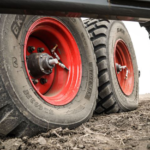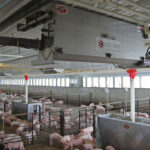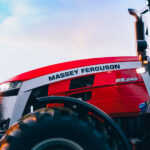White Planters Shares Tips for Using Plant Emergence for Planter Evaluation
As farmers around the country evaluate young plants at emergence, it is also the perfect time to judge whether or not their planters performed up to expectations. “Farmers only get 30 to 40 opportunities to plant in their entire career,”...
White Planters Shares Tips for Using Plant Emergence for Planter Evaluation
As farmers around the country evaluate young plants at emergence, it is also the perfect time to judge whether or not their planters performed up to expectations. “Farmers only get 30 to 40 opportunities to plant in their entire career,”...As farmers around the country evaluate young plants at emergence, it is also the perfect time to judge whether or not their planters performed up to expectations.
“Farmers only get 30 to 40 opportunities to plant in their entire career,” said Mark Hanna, extension agricultural engineer with Iowa State University. “Farmers can benefit from taking a step back and evaluating how effective their planting was to make changes for next year.”Driven by pressure from higher costs, farmers expect more return than ever on their investment in seed. A consistently accurate planter plays a vital role in farmers’ ability to see their return become a reality.

Plant emergence can reveal poor planter performance in several ways, including:
- Skips and Doubles – Skips and doubles in fields hurt farmers’ expected yield by causing two plants to share vital resources or leave precious field space un-utilized. A skip indicates an empty space in a row where seed either was not planted or otherwise did not grow. Although there can be many causes for a seed skip, the most likely cause is a problem with the planter, meaning a seed failed to drop where the farmer calibrated a drop. Often, skips and doubles are caused by a planter that interrupts and inefficiently moves seed from hopper to placement. This can be caused by improper pickup of the seed from the hopper, interruptions in the vacuum system responsible for holding the seed, or ricocheting inside the seed tube before the seed reaches the ground.If the planter fails once, it will likely fail again in another location, causing a gap in the expected amount of plant growth versus actual. A skip in one part of the field can result in a double planting in another location. When a double happens, two plants have to share water, sunlight and space rationed for one plant.“If you have doubles, two plants compete for the same nutrients,” said Randy Peterson, AGCO product specialist for White Planters. “If you notice a couple skips or doubles here and there, multiply that over your whole field, and you’re talking about real money. You’ll have wasted seed and reduced yield.”
- Inconsistent Emergence – Plant emergence over a wide range of days hurts the entire farming cycle. When some plants grow at a faster rate than others, the tallest plants shade the shortest plants, hurting plant development. Even if the plants that emerged at a later date than others do grow to fruition, they are more likely to have varying moisture content, thus shifting the harvesting schedule and costing the farmer time and money.Timing of emergence is dependent on accuracy of the planter depth indicator through the entire depth range, proper formation of a seed trench and proper closing of the trench. Any inaccuracy or inconsistency will cause variation in the timing of plant emergence.
- Uneven Spacing – Unevenly spaced plants cause imbalanced distribution of sun and water. Just as doubles cause plants to fight for the same sunlight, water and nutrients, unevenly spaced seed also causes irregular distribution of shared resources. If seed moving through a planter has heavy contact with the equipment, interruptions in movement can cause inefficiencies in spacing. Most planters use air systems to convey and secure the seed before dropping it in the ground. When these air sources are interrupted, spacing and seed singulation can suffer.
- Rough Openings, Inconsistent Seed Trench Depth – Even before emergence, rough openings and inconsistent seed trench depth can put planter ineffectiveness on display. Inconsistent seed trenches affect plant spacing and depth and will ultimately result in inaccurate planting.“You need to have a good seed trench for planting to go well,” Peterson said. “It’s the foundation for the seed to drop into, and it needs to be perfect. It should look like a wall, so the seed has room to be positioned correctly before the soil moves in around it.”Offset opener discs create uneven wear, causing additional maintenance intervals and a seed trench that may require positioning the gauge wheels trailing the point of seed delivery allowing for inconsistent depth of seed placement.
 “The most important evaluation to make about emergence is unified timing,” Hanna said. “Equal emergence and plant spacing provides plants that grow at the same rate, gather sunlight, nutrients and moisture equally and pollinate at the same time for higher yields. This is an ideal time of year to get out and read your field and your planter’s report cards.”
“The most important evaluation to make about emergence is unified timing,” Hanna said. “Equal emergence and plant spacing provides plants that grow at the same rate, gather sunlight, nutrients and moisture equally and pollinate at the same time for higher yields. This is an ideal time of year to get out and read your field and your planter’s report cards.”
The recently released White Planters™ 9000 Series can help growers combat these types of emergence problems by increasing planting accuracy and consistency.
The 9000 Series creates smooth, consistent seed trenches using opener discs that have opposing double row bearings for durability and each of the discs shares the cutting duties equally. Then, the 9000 Series uses a positive air system to move the seed through the planter, instead of a vacuum or mechanical delivery system. This allows for seed to uniformly filter into the seed disc, which holds seed steadily in place with cells as they rotate through the seed meter, ensuring crops are planted a consistent distance apart.
The positive-pressure system in the 9000 Series moves the seed without damaging the seed coating or drawing in dust or debris — preventing buildup and therefore skips and doubles. Once the seeds are ready to go into the ground, the 9000 Series edge-drop system ensures seeds drop as short a distance as possible for accurate seed placement. Seed tube clips hold the tube securely to the shank, preventing additional movement that could compromise results.
The White Planters patented depth calibration system provides farmers with the confidence that the depth they have specified using the adjustment handle and indicator is accurate through the entire depth range.
For more information on White Planters, the industry-leading row-crop planter line from AGCO, visit www.white-planters.com.
For more information on AGCO’s seeding and tillage solutions please, visit: http://stageblog.agcocorp.com/seeding-tillage/.



